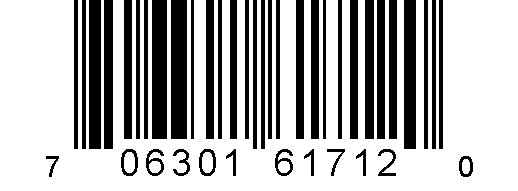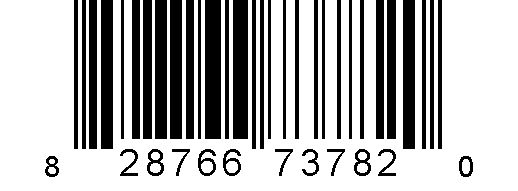Johann Sebastian Bach
4 Duets / Chromatic Fantasy & Fugue
Media Review / Listening Diary 2013-03-15
2013-03-15 — Original posting (on Blogger)
2014-11-08 — Re-posting as is (WordPress)
2016-07-12 — Brushed up for better readability
Table of Contents
Johann Sebastian Bach (1685 – 1750): 4 Duets, BWV 802-805
The CDs
Ton Koopman, organ
Johann Sebastian Bach: Organ Works Vol.5 (Clavierübung III, Canonic Variations on “Vom Himmel hoch da komm ich her” BWV 769a)
Ton Koopman, organ
Teldec / Das alte Werk 4905-98464-2 (2 CDs, stereo); ℗ / © 1997

Christophe Rousset, Harpsichord
Johann Sebastian Bach: Goldberg Variations BWV 988, Italian Concerto BWV 971, French Ouverture BWV 831, Chromatic Fantasy & Fugue BWV 903, 6 Partitas BWV 825-830, 4 Duetti BWV 802-805
Christophe Rousset, Harpsichord
Decca 475 7079 (4 CDs, stereo); ℗ 1992-95 / © 2005

Two Vastly Different Recordings
Part III of Johann Sebastian Bach’s Clavierübung consists almost entirely of liturgic organ music. The only exception are these four Duetti, BWV 805 – 805. Ton Koopman includes just these in volume 5 of his complete recording of Bach’s organ works. The liner notes strangely don’t even mention the duets at all. In Christophe Rousset’s recording the notes state that these four duets are for harpsichord and a “foreign body” in this collection of organ works. I’m not in a position to decide which instrument is historically correct — I have simply listened to the four Duetti in both versions and found them so different that they are hardly comparable:
Ton Koopman, Organ
Ton Koopman recorded the theseDuetti in 1996 on a beautiful organ by Gottfried Silbermann, built 1711 – 1714 in St.Marien in Freiberg (Saxonia, Germany), with 43 stops on 3 manuals plus pedal:
- E minor, BWV 802: 3’00”
- F major, BWV 803: 3’35”
- G major, BWV 804: 2’41”
- A minor, BWB 805: 3’02”
Christophe Rousset, Harpsichord
Christophe Rousset made the above recording in 1990, on a historic harpsichord, built 1751 by Henri Hemsch in Paris, with two keyboards, 2 x 8′ and one 4′ stop:
- E minor, BWV 802: 2’09”
- F major, BWV 803) 3’19”
- G major, BWV 804: 2’45”
- A minor, BWB 805: 3’53”
Comparison
The durations (hence the tempi) alone are vastly different! From my perspective (and judging from these interpretations), these pieces are clearly written for harpsichord rather than organ:
- E minor: Koopman plays this with rather soft flue registers, in an Andante tempo, whereas with Rousset, this is an Allegro piece on the harpsichord, vivid, transparent, and with drive — much more appealing!
- F major: ice on the organ — but again nicer on the harpsichord, where the sound characteristics again permit a faster, more fluent and vivid tempo!
- G major: here, both artists use virtually the same tempo — and this is the only piece among these four where I can’t tell which version I prefer — I like both: Koopman’s light, baroque registration plays well here, the piece profits from the extra colors on the organ, Rousset uses careful articulation to keep the piece transparent (that’s not too hard with two voices only, of course).
- A minor: this time, Rousset is substantially slower than Koopman; he again articulates very carefully, giving this piece substantially more weight than Koopman who again uses a soft, dark flue register.
Rating
I don’t mean to say that Rousset’s interpretation is necessarily better than Koopman’s — I merely think that playing these pieces on the harpsichord gives a richer experience than the organ in Koopman’s recording, despite the quality of Koopman’s interpretation and the beautiful, rich sound of that organ. My rating (relative, and again rather rating the instrument selection than the interpretation):
- Koopman: 4.0 (3 / 4 / 5 / 4)
- Rousset: 5.0 (5 / 5 / 5 / 5)
J.S. Bach: Chromatic Fantasy & Fugue, BWV 903
The CDs
The CD collection with Christophe Rousset (see above) also includes Bach’s Chromatic Fantasy & Fugue, BWV 903, which I also have with the following recordings:
Wanda Landowska, Harpsichord
Johann Sebastian Bach: Goldberg Variations, BWV 988; Chromatic Fantasy & Fugue, BWV 903; Italian Concerto, BWV 971
Wanda Landowska, Harpsichord
EMI Records / iTunes download (mono, 256 kbps); ℗ 1987, remastering 1999
(no booklet)

Ton Koopman, Harpsichord
Johann Sebastian Bach: Chromatic Fantasy & Fugue BWV 903; French Suite Nr.5, BWV 816; Ricercar from Musical Offering, BWV 1079; Toccata in G, BWV 916; Italian Concerto, BWV 971
Ton Koopman, Harpsichord
Erato 0630-16171-2 (CD, stereo); ℗ 1992

Andreas Staier, Harpsichord
Johann Sebastian Bach: Fantasias & Fugues BWV 894, 901-903, 904, 906, 917, 919, 921-922; Clavier-Übung I & II (6 Partitas BWV 825-830, Italian Concerto, BWV 971, French Overture BWV 831)
Andreas Staier, Harpsichord
Deutsche harmonia mundi / BMG classics 82876 67378 2 (4 CDs, stereo); ℗ 1989-1994 / © 2005

Timing / Durations
First, a quick comparison of the track durations:
- Wanda Landowska (1933): 8’29” / 4’54”
- Andreas Staier (1988): 6’35” / 5’32”
- Christophe Rousset (1990): 5’23” / 4’51”
- Ton Koopman (1986): 6’51” / 6’53”
Comments on the Recordings
And here are a few comments on the four recordings:
Wanda Landowska (1879 – 1959)
Landowska recorded this composition in 1933 — on a real monster of an instrument, built by Pleyel. This instrument was created with the idea of “enhancing” the harpsichord by adding many features of the (then) modern concert grand (adding a steel frame, heavy, wound strings, more registers such as a 16″ stop, pedals, etc.). Apart from the fact that the strings are plucked, the result of these efforts has nothing to do with historic harpsichords or their modern replicas. That is particularly true for the sound of this instrument: it took decades for the harpsichord builders to rediscover the beauty of the sound of historic instruments, and to learn how to build proper replicas.
Upon hearing that sound, one may understand Walter Gieseking‘s deprecating comments about the “chirping and rattling” of the harpsichord! Of course, Wanda Landowska can’t be blamed on the qualities of her instrument. People didn’t know any better at that time, and after all, she was the pioneer in the rediscovery of the harpsichord.
Landowska’s Playing
Her playing isn’t all that far “off”: she primarily appears to follow the edition by Hans von Bülow (1830 – 1894) edition for the piano, with very detailed dynamic, articulation and extreme tempo annotations (Bülow included tons of crescendi / decrescendi, rallentandi, pedaling instructions, etc., all utterly “non-Bach”, considering that the composer’s score is almost devoid of any annotation): what appears to be free preluding over long stretches in the fantasia is actually found in Hans von Bülow’s score. In a fantasia this is probably not too far-fetched, but the way it is done here, it often totally disrupts the musical flow.
On the other hand, she does articulate carefully and has no technical problems with this composition. Overall, despite the “horrible sound”, this still is a valuable historic document that I like listening to from time to time! It should be added that Bach’s score does leave a lot of freedom, as there are virtually no phrasing indications, and many of the arpeggiando sections in the Fantasia are not written out.
Rating: 3 / 3 = 3.0
Andreas Staier
One of the artist’s early recordings, as he states himself in the liner notes — technically flawless, though clearly not as expressive as his later interpretations (in general, and even more so when he is playing the fortepaino in later years), and also not nearly as expressive / extroverted as Koopman, mostly focusing on clarity and virtuosity. The harpsichord sound is rather neutral, maybe a bit metallic (this could also be the sound management, though), and on the artist’s side I miss a more detailed, “speaking” articulation and phrasing. Still, a good interpretation, but not as good as the ones below.
Rating: 4 / 4 = 4.0
Christophe Rousset
The first thing I should mention here is the really beautiful, warm and well-balanced sound of Christophe Rousset’s historic harpsichord (built 1751 by Henri Hemsch in Paris, see above), which by itself makes listening to this recording a valuable experience. Then, Rousset’s interpretation features careful, detailed articulation and phrasing, a clearly singled out, “speaking” recitativo part — a very nice interpretation of the Fantasia, overall. The only minor remark from my side would be that he could have shown more of the Stylus Phantasticus, i.e., be more expressive / eruptive. The remarks about phrasing and articulation also apply to the Fuga, which Rousset plays in a fluent tempo — my only point here is that I think this piece would profit from a slower tempo (see below), which would give the listener a better chance to follow the polyphony in this composition.
Rating: 5 / 4 = 4.5
Ton Koopman
Among these four interpretations of the Fantasia, Koopman shows the most pronounced expression of the Stylus Phantasticus that clearly applies to this composition, and which Bach must have adopted while visiting Dieterich Buxtehude in Lübeck (1705 – 06), some 15 – 17 years prior to this composition (1720 – 23), Koopman takes a very “liberal” often almost “wild”, if not ferocious approach, especially in the arpeggio and especially the recitativo parts — really a piece “in Koopman’s gusto”!
The Fuga is the slowest among these four — by a long stretch — and I like the tempo: this not only lets the listener enjoy the intricacies of the polyphonic structure, but it also elevates that composition into the circle of the many big organ fugues that Bach wrote throughout his life. Koopman’s articulation and phrasing are flawless, of course. The harpsichord can’t quite compete in beauty and balance of the sound with the historic instrument Rousset is playing — though one could say that Koopman’s instrument has perhaps a little more individuality & character.
Rating: 5 / 5 = 5.0
Listening Diary Posts, Overview











